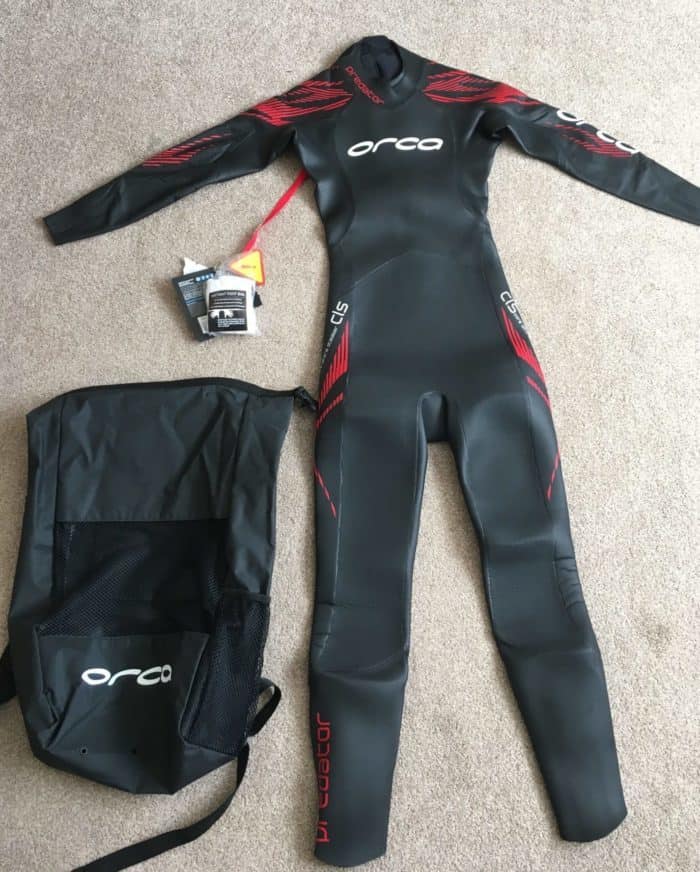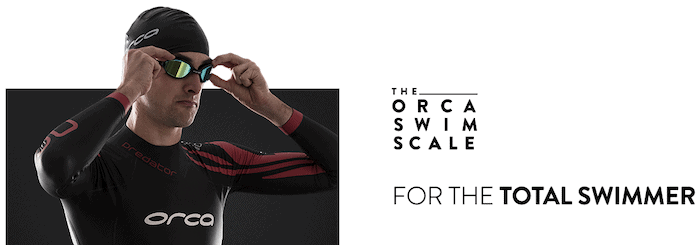2020 has arrived which, before you know it, will mean that open water swimming will quickly return to your weekly schedule. And with that, will this be a year for a new suit? After a ‘first look’ late last year, it’s time to update on our findings on the range-topping wetsuit from one of triathlon’s longest-standing brands.
After numerous training swims and races, in lakes and the sea, Chris Hovenden reviews Orca’s latest flagship wetsuit – the Orca Predator.
The Orca Predator | £649 | www.orca.com
Orca supports some of triathlon’s most recognisable athletes, including the popular Sebastian Kienle. Its triathlon pedigree is up there with the best and biggest brands, and after 25 years of innovation in the sport, Orca claims to have brought to market its most advanced wetsuit to date – the Orca Predator.
Orca offers several groupings of wetsuit aimed at different categories of swimmer – for example, the Alpha is designed for a ’natural swimmer’, whereas the on-test Predator (which has an arguably cooler name), is aimed at a ‘total swimmer’.
The ‘total swimmer’ is said to be someone looking for a wetsuit that offers the ‘perfect combination between flexibility and flotability [buoyancy]’. This description particularly appeals to this tester, and I expect it is a pairing that is attractive to many triathletes.
As you might expect with the above claims, the Orca Predator wetsuit is said to provide flexibility in the upper body whilst offering buoyancy for your legs – the end product being in theory a wetsuit that stops your legs dropping and causing unwanted drag, and at the same time allows your arms to maintain a good stroke without being restricted/becoming overly fatigued.
Out of the box it is clear the Orca Predator is being positioned as a premium product matching up well with its price tag north of £600. Nice touches include: the accompanying Mesh Bag (which itself has an RRP of £20.00); and, the inclusion of helpful foot covers and wetsuit gloves to protect the neoprene when putting the suit on.
In addition to the nice to have bonus items above, the suit claims to be packed full of innovative tech, including the following:
- The panels just below the shoulder and on the forearms are noticeably (exceptionally) thin – Orca says this is 0.88 Free technology paired with titanium, the result being a wetsuit that is only 0.5mm thick with a titanium layer for improved insulation; and
- Shoulder flexibility is offered by using Yamamoto 44, which is only 1.5mm thick and said to be very elastic. A claimed by-product of the elasticity is that it allows for a narrower zipper which allegedly causes less restriction and reduces water ingress.

I had been sceptical as to how robust the forearms and shoulders would be, but these fears were completely unfounded. The noticeable result of the thin material was impressive flexibility, range of motion, and the subsequent relative lack of fatigue in my arms and shoulders. In short very impressive.
- 5mm thick side panels, called Core Lateral Stabilizer, that are intended to improve core strength and reduce twisting (i.e. losing energy), which in turn could help you maintain an efficient stroke.
It is hard to isolate and judge the impact or quantify the effect of the side panels. However, the overall feel of the suit in the water was first-class – I felt: smooth, streamlined, efficient, and controlled (i.e. I rarely over-rotated). I was able to maintain good technique (for me) in my stroke with relative ease, even over longer and sustained efforts. The result being faster swim times with less perceived exertion.
- Also, Orca appears to have considered the importance of not only speed in the water but also when rushing to T1. The lower leg panels have a coating designed to help them slip through the water; whilst, HydroLite panels are said to make it easier to remove the wetsuit.
Getting the suit off your forearms and wrists, as well as your legs, was easy – with the addition of glide the suit almost slipped off with ease. However, the only real criticism of/problem I have with the Orca Predator was undoing the zip – the classic pull-down zip should have been straightforward and have helped with a swift T1, unfortunately on several occasions the zip was jammed by the neoprene flaps/covers requiring several substantial tugs on the cord (and hope that wetsuit would be okay). Importantly, I always managed to get the suit off without too much hassle and the only lasting marks to the suit are a few snags/cuts on the neoprene cover.

The Verdict:
With an RRP north of £600, the Orca Predator is firmly in the ‘expensive’ bracket of wetsuits, however for that hefty outlay you get a really impressive wetsuit. The suit includes impressive tech and is well suited to triathletes like this tester, namely not a natural swimmer. The only concern that I experienced was the zip, but that may have been an isolated issue.











